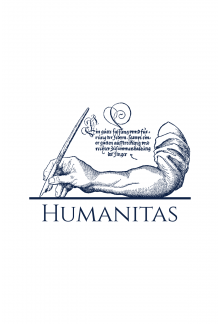- Titulinis
- Dalykinė ir mokslinė literatūra
- Keramik jenseits von 'Kulturen': Mobilität, Verflechtungen und Transformationen im nörd...

Caroline Heitz
Keramik jenseits von 'Kulturen': Mobilität, Verflechtungen und Transformationen im nördlichen Alpenvorland (3950–3800 v.Chr.)
Balsavo 0
ISBN: 9789464280463
Autorius : Caroline Heitz
Leidimo metai: 2022
Leidėjas: Sidestone Press
Puslapių skaičius: 504
Leidinio kalba: Vokiečių
Formatas: Kieti viršeliai
Formatas: 280×210
Autorius : Caroline Heitz
Leidimo metai: 2022
Leidėjas: Sidestone Press
Puslapių skaičius: 504
Leidinio kalba: Vokiečių
Formatas: Kieti viršeliai
Formatas: 280×210
Kaina:
Šių parametrų produkto neturime
Likutis pakankamas
Pristatymo terminas Lietuvoje 3-6 savaitės
Pristatymo terminas Lietuvoje 1-4 darbo dienos
Pristatymo terminas Lietuvoje 3-6 savaitės
Pristatymo sąlygos
Aprašymas
Mobilität ist für Formen des sozialen Zusammenlebens grundlegend. Doch welche Rolle spielte räumliche Mobilität in der Vergangenheit? Aus prähistorischen Zeitabschnitten wie etwa dem Neolithikum ist dazu noch immer wenig bekannt. Das gilt auch für die Siedlungsräume des nördlichen Alpenvorlandes. Deren Feuchtbodensiedlungen mit den hervorragend erhaltenen Resten in Seen und Mooren gehören seit 2011 zum UNESCO Welterbe und bieten eine einzigartige Forschungsgrundlage. Die dendrochronologisch datierten Siedlungen eröffnen die seltene Möglichkeit, kulturelle, soziale und ökonomische Transformationen zeitlich und räumlich hochauflösend zu untersuchen. Das gelingt im vorliegenden Band anhand der Keramik aus zeitgleich datierten Siedlungen am Zürichsee und Bodensee aus der Zeit zwischen 3950 und 3800 v.Chr.
Prozessphilosophische Überlegungen zum Entstehen und dem Wandel von ‘Dingen’ werden mit relationalen sozialtheoretischen Konzepten wie etwa dem Habitus-Theorem zu einem praxeologischen Ansatz verbunden. Dieser dient als epistemologische Grundlage einer neu ausgearbeiteten ‘Mixed Methods Research’-Methodologie, die ein tieferes Verständnis von Mobilität, Beziehungsgeflechten, sozialen Konfigurationen und Transformationen ermöglicht: Mit qualitativen Klassifikationsmethoden können soziale Praktiken der Keramikherstellung aus der Handlungsperspektive nachvollzogen werden und mit quantitativen Klassifikationsmethoden überregionale Muster der Keramikkonsumption. Anhand solcher materieller Verflechtungen werden Muster räumlicher Mobilität sowie die weitreichenden Beziehungen der jeweiligen Siedlungsgemeinschaften erkennbar. Im Rhythmus einzelner Dekaden lassen sich mobilitätsbezogene Aneignungsphänomene und Transformationen in den Keramikpraktiken nachvollziehen. Darüber hinaus führt die Kombination einer subjektivistischen mit einer ‘objektivierten’ Haltung im Forschungsprozess auf Basis von Pierre Bourdieus Epistemologie, der Praxeologie, zu einem erkenntnistheoretischen, metamodernen ‘dritten Weg’, der zwischen dem Realismus der Moderne (Prozessuale Archäologie) und dem Konstruktivismus der Postmoderne (Postprozessuale Archäologie) vermittelt. Dadurch werden kulturhistorische Gesellschaftsmodelle dekonstruiert, welche ‘Kulturen’ als vermeintlich statische, homogene, räumlich klar abgrenzbare Entitäten konzeptualisierten. Stattdessen verweist die Keramik auf translokale soziale Konfigurationen, durch welche die Siedlungen während des 4. Jahrtausends v.Chr. im nördlichen Alpenvorland miteinander verbunden waren.
English abstract
Mobility is fundamental to forms of social configurations. But what role did spatial mobility play in the past? Regarding prehistoric periods, such as the Neolithic, we still do know little about this. That also applies to the settlement areas of the northern Alpine Foreland. The wetland settlements there were labelled UNESCO World Heritage in 2011. With their excellently preserved remains in lakes and bogs they provide a unique research basis. The dendrochronologically dated settlements open a rare possibility to approach cultural, social, and economic processes based on a high temporal and spatial resolution. In the present volume, this is achieved based on pottery from contemporaneously dated settlements on Lake Zurich and Lake Constance from the period between 3950 and 3800 BC.
Process philosophical considerations on the (trans)formation of ‘things’ are combined with relational social theoretical concepts such as the habitus theorem to form a praxeological approach. The latter serves as the epistemological basis of the newly elaborated mixed method research methodology, which allows for a deeper understanding of mobility, social relations and configurations as well as transformations. Qualitative methods (classification of vessel designs) is utilised to understand pottery production practices from the perspective of the makers and quantitative methods (cluster analysis of vessel features) can be used to analyse transregional structures of ceramic consumption. Accordingly, patterns of spatial mobility and far-reaching relationships of settlement communities become apparent based on such material entanglements. Mobility-related appropriation phenomena and change in pottery practices can be approached in the rhythm of individual decades. Furthermore, the combination of a subjectivist with an ‘objectified’ stance during the research process based on Pierre Bourdieu’s epistemology, the praxeology, leads to an epistemological, metamodern ‘third way’ that mediates between the realism of modernity (processual archaeology) and the constructivism of postmodernity (post-processual archaeology). Finally, the research results deconstruct the common social models following the cultural-historical paradigm, which conceptualized ‘cultures’ as supposedly static, homogeneous, spatially distinct entities. Instead, the pottery points to translocal social configurations that related settlements in the northern Alpine Foreland with each other in the 4th millennium BC.
Atsiliepimai (0)
Palikite atsiliepimą
